We are witnessing a significant shift in how businesses approach growth strategies, with content marketing creative playing a pivotal role. As we navigated the challenges of the pandemic, it became evident that businesses leveraging strategic content were better equipped to maintain brand visibility and drive demand.
In fact, a substantial 83% of businesses reported increased brand awareness through their content strategy, while 67% saw a notable increase in lead generation. As a result, around 88% of businesses plan to maintain or increase their content marketing budgets in 2023.
We’re diving into the world of effective content marketing and exploring how it can transform businesses. By adopting the right creative approach, companies can not only generate awareness but also drive measurable results.
Key Takeaways
- Effective content marketing creative strategies can transform businesses.
- 83% of companies report increased brand awareness through strategic content.
- The right creative approach drives measurable results.
- Businesses are increasing their content marketing budgets in 2023.
- Crafting content that resonates with your audience is crucial.
The Power of Content Marketing Creative in Today’s Digital Landscape
The power of content marketing creative is revolutionizing the way businesses connect with their audiences in today’s digital landscape. As we continue to navigate the ever-changing digital terrain, it’s clear that content marketing has become an essential strategy for businesses seeking sustainable growth.
During the height of the pandemic, content marketers were at the forefront of many B2B marketing efforts. In fact, 83% of businesses were able to boost brand awareness with their content strategy, while 67% increased demand and lead generation. As a result, around 88% plan to maintain or increase their content marketing budgets in 2023.

How Creative Content Marketing Drives Business Results
Creative content marketing drives business results by blending written, visual, and interactive elements to create more engaging experiences. Industry leaders are moving away from quantity-focused approaches to quality-driven strategies that prioritize depth and audience relevance. By doing so, businesses can increase demand and lead generation, ultimately driving revenue growth.
| Content Marketing Strategy | Business Results |
|---|---|
| Quality-driven content | Increased demand and lead generation |
| Blended content formats | More engaging experiences |
| Authenticity and transparency | Improved brand awareness and trust |
The Evolution of Content Marketing in 2023
The pandemic accelerated digital adoption, permanently changing how businesses approach content marketing. In 2023, we’re witnessing a convergence of content formats, with successful brands embracing AI and machine learning to create more personalized experiences at scale. For more insights on content marketing strategies, visit Christoph Olivier Consulting.
As content marketing continues to evolve, businesses must adapt to stay ahead of the curve. By prioritizing quality, relevance, and authenticity, businesses can establish themselves as industry leaders and drive long-term success.
Building a Successful Content Marketing Creative Strategy
To build an effective content marketing strategy, you must first define your goals and understand your target audience. A well-crafted strategy enables businesses to create content that resonates with their audience and drives meaningful results.
Defining Your Content Marketing Goals and KPIs
Defining clear marketing goals is essential to measuring the success of your content efforts. We recommend establishing specific, measurable KPIs that align with your overall business objectives. This could include metrics such as website traffic, engagement rates, or lead generation. By leveraging data and customer feedback, you can refine your strategy and optimize your content for better performance.
| Goal | KPI | Target |
|---|---|---|
| Increase website traffic | Monthly visitors | 10,000 |
| Boost engagement | Social media shares | 500 |
| Generate leads | Conversion rate | 5% |
Understanding Your Target Audience and Their Needs
Understanding your target audience is crucial to creating effective content. We use a systematic approach to audience research, going beyond basic demographics to uncover the psychological drivers behind purchasing decisions. By creating detailed buyer personas, you can craft content that speaks directly to specific audience segments and their unique pain points, addressing the questions they are actually asking.

By mapping your audience’s journey, you can identify information gaps and opportunities at each stage of their decision-making process. This enables you to create targeted content that meets their needs and drives engagement. Leveraging data and customer feedback creates a continuous improvement loop that keeps your content increasingly relevant over time.
Engaging Blog Content Marketing Examples That Transform Businesses
Transforming your business through blog content marketing requires strategic and creative approaches. By examining successful examples, we can identify key elements that contribute to their effectiveness.
HubSpot’s Comprehensive Guides and Their Impact
HubSpot is renowned for its comprehensive guides that provide valuable insights to its audience. These guides are meticulously crafted, offering in-depth information on various topics related to marketing, sales, and customer service. By doing so, HubSpot not only attracts a significant following but also establishes itself as a thought leader in the industry.
The impact of these guides is multifaceted. They generate substantial traffic, enhance HubSpot’s credibility, and provide a wealth of information that resonates with their target audience.
Atlassian’s Data-Driven Blog Posts That Generate Traffic
Atlassian’s blog content strategy is another exemplary model. By leveraging data-driven insights, Atlassian crafts blog posts that are both informative and engaging. For instance, their ‘Left Brain vs. Right Brain’ post attracts over 10,400 monthly organic visits, demonstrating the power of using data to support content.
| Key Strategies | Benefits |
|---|---|
| Using data-backed information | Enhances credibility and attracts substantial search traffic |
| Combining authoritative data with accessible explanations | Makes complex information digestible for the audience |
| Identifying topics with high search potential but low competition | Allows Atlassian to dominate specific niches |

Creative Social Media Content Marketing Strategies
Creative social media content marketing strategies can transform how businesses connect with their audience. To achieve this, brands must focus on creating engaging content that resonates with their target audience.
Duolingo’s TikTok Humor Approach to Brand Awareness
Duolingo’s TikTok marketing strategy is a prime example of using humor to boost brand awareness. By creating entertaining content, Duolingo has managed to engage a wider audience and make language learning appealing.

Corona’s Visual Instagram Campaigns That Engage Audiences
Corona’s Instagram campaigns, such as #ThisIsLiving, demonstrate the power of visual storytelling. By showcasing stunning images of beaches, nature, and sunsets, Corona creates an immersive brand world that audiences want to be part of.
- Corona’s campaigns prioritize lifestyle aspirations over product features, creating an emotional connection with their audience.
- Their strategic use of breathtaking imagery drives engagement and sharing.
- By balancing product visibility with authentic experiences, Corona reinforces their brand values.

Compelling Video Content Marketing Examples
The power of video content marketing lies in its ability to captivate and retain viewers.
Blendtec’s Viral “Will It Blend?” Series and Sales Impact
Blendtec’s “Will It Blend?” series is a prime example of how video content can drive engagement and boost sales. By blending unusual items, Blendtec showcased the blender’s power and durability, creating a viral sensation that significantly impacted their brand visibility and sales figures.
This campaign not only demonstrated the product’s capabilities but also entertained viewers, making it a memorable marketing effort.
Patagonia’s Environmental Documentaries for Brand Positioning
Patagonia’s environmental documentaries are another compelling example of video content marketing. These documentaries focus on ecological issues, particularly those affecting marine life, and promote environmental activism by raising awareness of these concerns.
By highlighting ecological issues, Patagonia strengthens its brand‘s dedication to environmental responsibility and activism, motivating viewers to act. Key aspects of their approach include:
- Aligning content with brand values to create deeper customer connections.
- Focusing on issues their audience cares about rather than product features.
- Investing in high-quality, feature-length documentaries that demonstrate a commitment to their cause.
- Building a community of like-minded consumers who support the brand because of shared values.

Effective Email Marketing Content That Converts
Effective email marketing is about more than just sending emails; it’s about crafting a compelling narrative that drives engagement and conversion. We see this in action through various successful campaigns.
Warby Parker’s Personalized Emails That Drive Engagement
Warby Parker’s email marketing strategy is a prime example of how personalization can drive customer engagement. By tailoring their content to individual preferences, they create a more meaningful connection with their audience. Their emails often include personalized product recommendations and exclusive offers, making customers feel valued.
For instance, their emails might suggest frames based on the customer’s previous purchases or browsing history, enhancing the overall user experience. This approach not only fosters brand loyalty but also encourages repeat business.
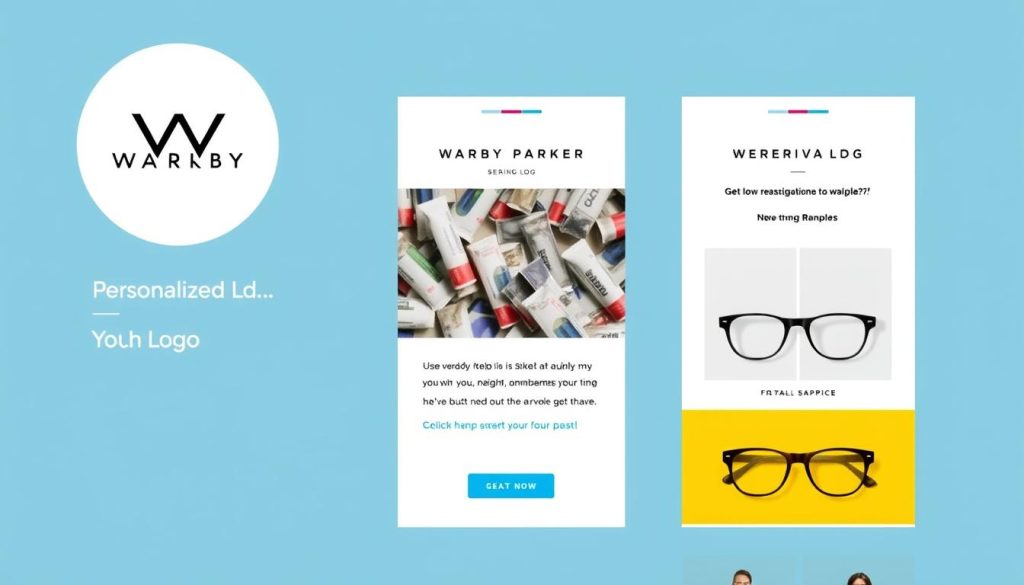
Airbnb’s Tailored Travel Guides That Enhance User Experience
Airbnb’s use of tailored travel guides in their emails is another effective strategy for enhancing user experience. By providing destination highlights and travel inspiration based on users’ previous searches and bookings, Airbnb ensures their emails are both relevant and valuable.
Their email content strategy transforms standard promotional messages into personalized travel companions that users look forward to receiving. By including local insights and practical information, Airbnb positions itself as a travel authority, thereby increasing the likelihood of bookings.
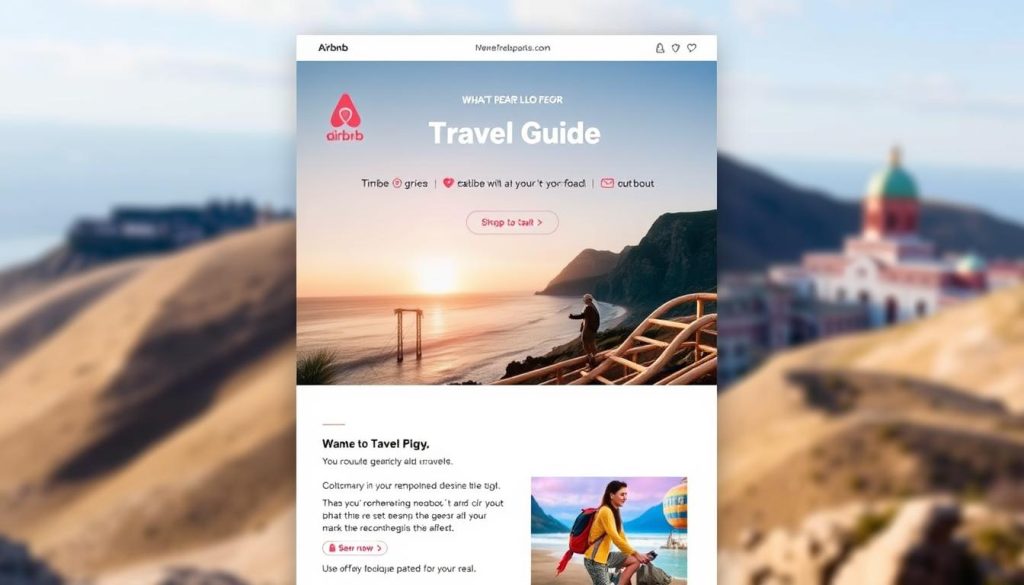
Interactive Content Marketing Examples That Boost Engagement
Engagement is the new currency in marketing, and interactive content is the key to unlocking it. By incorporating interactive elements, businesses can significantly enhance user experience and drive meaningful engagement.
Climate FieldView’s Fungicide Tool for Farmers
Climate FieldView’s fungicide tool is a prime example of interactive content in action. This tool helps farmers make informed decisions about fungicide applications, enhancing their crop management practices.
By providing personalized recommendations based on specific farm data, Climate FieldView’s tool not only improves user experience but also fosters a deeper connection between the brand and its users.

Marriott’s Vacation Planning Quiz That Personalizes Recommendations
Marriott’s vacation planning quiz is another excellent example of how interactive content can boost engagement. The quiz suggests local activities and restaurants based on users’ preferences, creating a tailored travel experience.
By incorporating a captivating design theme and an intuitive flowchart format, Marriott keeps users engaged throughout the quiz, resulting in higher conversion rates and a more satisfying user experience.

User-Generated Content Marketing Strategies That Build Community
Building a community around your brand is crucial, and user-generated content is a powerful tool to achieve this. By encouraging customers to share their experiences, businesses can foster a sense of belonging and loyalty.
GoPro’s Hashtag Campaigns That Showcase Customer Experiences
GoPro’s hashtag campaigns are a prime example of user-generated content marketing in action. By encouraging customers to share their adventure videos and photos, GoPro creates a vast library of authentic content that showcases the capabilities of their products.
The use of a branded hashtag allows GoPro to track and curate user-generated content, which is then featured on their social media channels, further incentivizing customers to participate.
Coca-Cola’s “Share a Coke” Campaign and Its Business Impact
Coca-Cola’s “Share a Coke” campaign is a classic example of user-generated content marketing that created a personal connection with consumers. By printing people’s names on Coca-Cola bottles, the campaign made the product feel unique to each consumer.
This personalization strategy led to massive user engagement, as customers shared photos and stories of their personalized bottles on social media, significantly contributing to increased sales. The campaign’s success came from understanding a fundamental human truth: people love seeing their names and feeling personally acknowledged by brands.

Data-Driven Content Marketing Examples That Establish Authority
Data-driven content marketing is revolutionizing how businesses establish authority in their respective industries. By leveraging data, companies can create personalized content that resonates with their target audience, driving engagement and fostering brand loyalty.
Semrush’s Annual Reports That Generate Backlinks
Semrush’s annual marketing reports are a prime example of data-driven content marketing. These reports provide valuable insights into marketing trends, backed by comprehensive data analysis. By offering high-quality, informative content, Semrush generates backlinks from reputable sites, enhancing their authority in the SEO and digital marketing space.

Spotify Wrapped’s Personalized Data That Drives Social Sharing
Spotify Wrapped is another excellent example of how personalized data can drive social sharing and engagement. By providing users with a yearly recap of their listening habits, Spotify encourages users to share their results on social media, creating a viral effect that boosts brand visibility and reinforces Spotify’s position in the music streaming market.
Key aspects of Spotify Wrapped’s success include its visually appealing design, the emotional resonance of personalized data, and the consistent timing of its release, which together create a significant impact on marketing efforts.
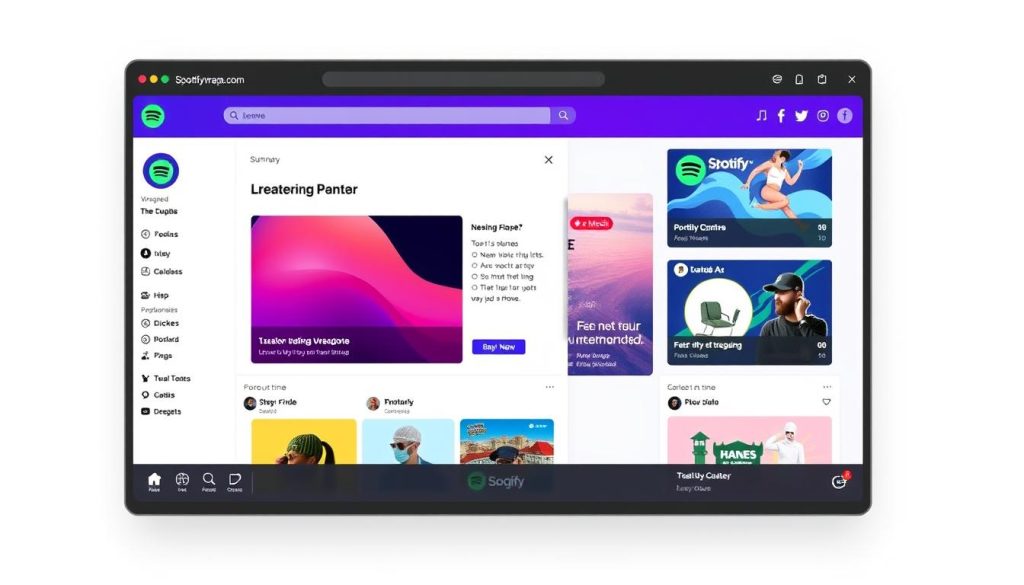
Evergreen Content Marketing Strategies for Long-Term Success
To build a lasting impact, businesses are turning to evergreen content marketing strategies that continue to drive results over time. Evergreen content remains relevant and valuable to the audience long after its initial publication.
Notion’s Tutorial Series That Provides Ongoing Value
Notion’s tutorial series is a prime example of evergreen content that continues to provide value to users over time. By creating comprehensive guides on how to use their product, Notion educates its audience and builds trust. This approach not only helps in customer onboarding but also establishes Notion as a thought leader in the productivity and collaboration space.

Slack’s Customer Success Stories That Build Trust
Slack’s customer success stories demonstrate the power of evergreen content in building trust and credibility. By showcasing real-world applications of their platform across diverse industries, Slack helps potential customers envision how they can benefit from using the platform. These stories address common objections and concerns, creating a powerful form of social proof that shortens the sales cycle and increases conversion rates.
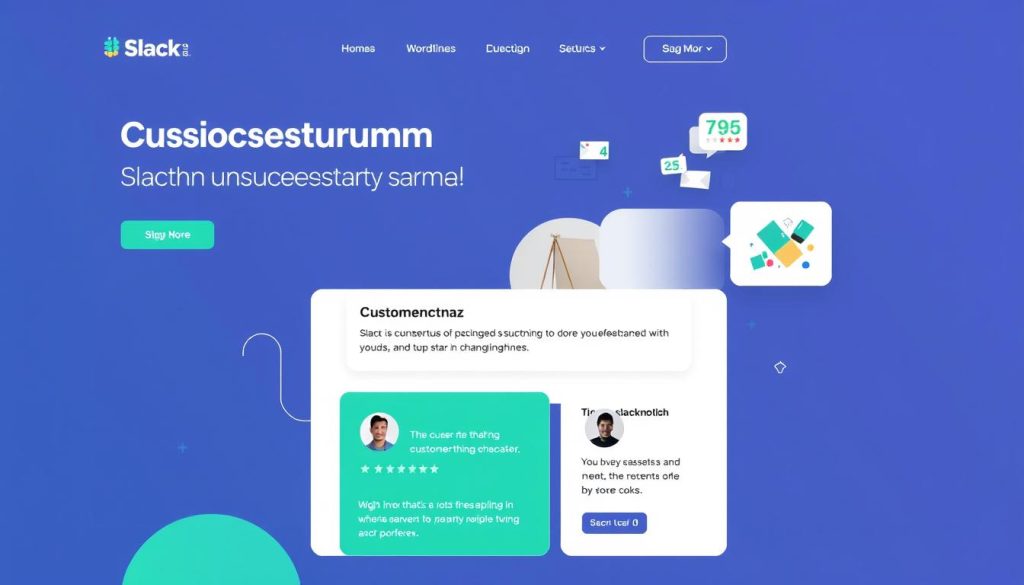
By incorporating evergreen content marketing strategies, businesses can create a lasting impact, build trust with their audience, and drive long-term success.
B2B Content Marketing Creative That Drives Business Growth
In the B2B sector, content marketing creative is crucial for success. Effective strategies enable businesses to connect with their target audience, build trust, and drive growth.
Salesforce’s Informative Blog
Salesforce’s blog is a prime example of how informative content can position a company as an industry leader. By sharing valuable insights and expertise, Salesforce attracts potential customers and builds credibility.

Zoom’s Remote Work Resources
During the COVID-19 pandemic, Zoom’s remote work resources became invaluable. By offering free webinars, tutorials, and best practice guides, Zoom provided immediate value to its users. This targeted approach helped Zoom address the unique needs of various industries, from education to healthcare.
- Zoom’s resources demonstrated how timely, need-based content can drive business growth.
- Their content strategy addressed the challenges businesses faced when transitioning to remote work.
- By providing industry-specific resources, Zoom showed a deep understanding of diverse customer needs.

B2C Content Marketing Creative Examples That Connect With Consumers
We see B2C content marketing as a powerful tool for brands to resonate with their audience on a deeper level. By leveraging creative content, businesses can establish a strong emotional connection with their consumers, driving engagement and loyalty.
Procreate’s Artist Tutorials

Procreate’s artist tutorials are a prime example of B2C content marketing done right. By offering valuable content that helps artists improve their skills, Procreate builds a loyal community around its brand. These tutorials not only showcase the capabilities of their product but also provide a sense of belonging among users.
Calm App’s Relaxation Ads
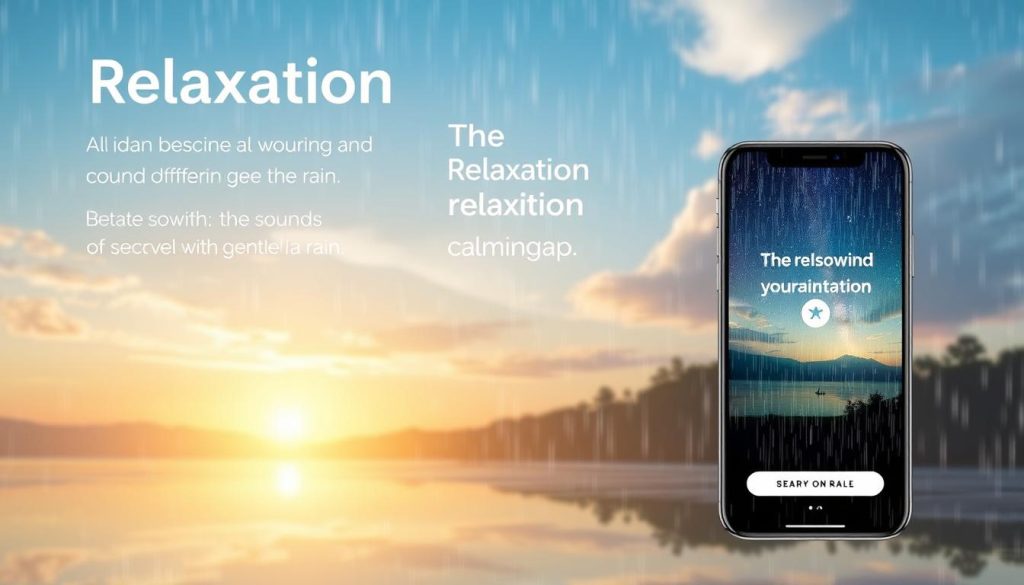
Calm App’s relaxation ads demonstrate the power of B2C content marketing in creating an immediate emotional connection with consumers. By using soothing visuals and sounds, Calm’s ads resonate strongly with their target audience, encouraging downloads and usage. Their campaign featuring relaxing rain sounds is a notable example, providing audiences with a brief moment of peace and effectively showcasing the app’s value.
The success of these B2C content marketing creative examples lies in their ability to address the psychological needs of their audience. By focusing on the emotional benefits of their products, both Procreate and Calm App create a lasting impression on their consumers, setting themselves apart from competitors.
Finding Inspiration for Your Content Marketing Creative
Content marketing creative requires continuous inspiration to resonate with your target audience and drive results. We find that using the right strategies can help you stay ahead in the ever-evolving content landscape.
Analyzing Competitor Content to Identify Gaps and Opportunities
Analyzing competitor content is a crucial step in identifying gaps and opportunities in your content marketing strategy. By examining what’s working for your competitors, you can gain valuable insights into trending topics and areas that need more attention.
We’ve tested dozens of tools and found that platforms like Semrush’s Topic Research tool provide invaluable insights into what your audience is actively searching for. This helps you identify emerging trends before they peak, positioning your content ahead of competitors.
Utilizing Research Tools to Discover Trending Topics
Research tools have revolutionized how we discover trending topics and content opportunities, transforming inspiration from an art to a science. By leveraging these tools, you can gather valuable information that informs your content marketing strategy and ensures your content remains relevant and engaging.
Some key benefits of using research tools include:
- Identifying emerging trends before they peak
- Creating a comprehensive view of your industry landscape and audience interests
- Informing your content calendar and targeting strategy with Google Trends
- Revealing early-stage content opportunities through social listening tools
By combining multiple research tools, you can create a robust content strategy that drives results and keeps your audience engaged.
Implementing Your Content Marketing Creative Across Multiple Channels
To maximize the impact of your content marketing creative, it’s essential to implement it across multiple channels. This approach enables you to reach a broader audience and reinforce your brand message across different platforms.
We have identified two key strategies for successful multi-channel content marketing: creating a cohesive multi-channel content strategy and repurposing content for different platforms and formats.
Creating a Cohesive Multi-Channel Content Strategy
A cohesive multi-channel content strategy involves planning and coordinating your content across various platforms to ensure consistency and maximize impact. This includes:
- Defining your target audience and their preferred channels
- Developing a content calendar that aligns with your marketing goals
- Ensuring brand consistency across all channels
By adopting a unified approach, you can streamline your content marketing efforts and improve overall efficiency.
Repurposing Content for Different Platforms and Formats
Repurposing content is a highly effective way to extend the reach of your content marketing creative. This involves adapting your content for different formats and platforms, such as:
- Transforming blog posts into infographics or videos
- Converting webinars into blog series or social media posts
- Utilizing white papers as a foundation for eBooks or research papers

By repurposing your content, you can cater to different audience preferences, increase engagement, and maximize your content investment.
Measuring and Optimizing Your Content Marketing Creative Performance
Effective content marketing creative requires continuous measurement and optimization to drive meaningful results. To achieve this, you need to track key metrics and leverage the right tools and techniques.
Key Metrics to Track for Different Content Types
Different content types require tracking different metrics. For instance, blog posts require tracking SEO metrics like keyword rankings and organic traffic, while social media content requires tracking engagement metrics like likes, shares, and comments.
By understanding these metrics, you can refine your content strategy to better resonate with your target audience and improve overall content performance.
Tools and Techniques for Content Performance Analysis
The right tools and techniques for content performance analysis can transform raw data into actionable insights. We’ve found that combining specialized tools like Semrush and Ahrefs with Google Analytics provides a comprehensive view of content performance.
Additionally, heat mapping tools like Hotjar reveal how users interact with your content, while social listening tools help measure content impact beyond your owned channels.
By leveraging these tools and techniques, you can adopt a data-driven approach to content optimization, driving continuous improvement and strategic refinement based on actual user behavior and preferences.
Conclusion: Transforming Your Business Through Strategic Content Marketing Creative
By harnessing the potential ofcontent marketing, businesses can drive sustainable growth and outperform competitors. We’ve seen howstrategic content marketing creativehas the power to transform businesses by building meaningful connections with their audience, driving long-termsuccess.
The most effectivecontent marketingstrategies align creative approaches withbusinessobjectives, ensuring every piece ofcontentserves a specific purpose in the marketing funnel. It’s about understanding your uniqueaudienceand creatingcontentthat genuinely addresses their needs and challenges.
To achievesuccesswithcontent marketing, businesses must view it as a long-term investment rather than a quick-fix tactic. By implementing the strategies and examples shared, you can develop amarketingapproach that differentiates your brand and drives measurableresults. Yourcontent marketingjourney starts with identifying your coreaudienceneeds and creating valuablecontentthat addresses them better than anyone else.Effective content marketing is not just about following trends; it’s about crafting a strategy that yields tangible business outcomes.
